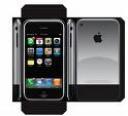Tag Archive
 When a teenager turns 16 years old, they are excited to get their drivers license. Unfortunately, teens have more driving accidents than any other age group. For the majority of teen drivers, the question isn’t whether they are going to have an accident, but when they are going to have an accident.
When a teenager turns 16 years old, they are excited to get their drivers license. Unfortunately, teens have more driving accidents than any other age group. For the majority of teen drivers, the question isn’t whether they are going to have an accident, but when they are going to have an accident.
Inexperience is the main reason that teenagers are vulnerable to traffic accidents. Although 16 to 19 year olds only make up 5.3 percent of the driving population in our nation, they’re involved in 13.3 percent of all of the traffic accidents and 11 percent of crashes that are fatal.
A new program aimed to protect teenagers is “graduated licensingâ€. Although the age of licensing is the same, full privileges come gradually.
The program begins with a learner’s permit. Next, is the intermediate stage, in which teens can drive during the daytime alone, and in the evening they can drive between 9 p.m-6 a.m. with a licensed driver. Then, the advanced stage comes. This is when teens can drive with no restrictions.
The graduated licensing program is a good step to ensure that our teens remain safe. However, teens need to protect themselves by practicing safe driving habits and purchasing used car warranties.
 A new rating system for roof-strength has been launched by the Insurance Institute for Highway Safety, and has conducted its first tests on small SUVs. Unfortunately, only four out of the twelve vehicles tested managed to get a Good rating, which is the top rating.
A new rating system for roof-strength has been launched by the Insurance Institute for Highway Safety, and has conducted its first tests on small SUVs. Unfortunately, only four out of the twelve vehicles tested managed to get a Good rating, which is the top rating.
The SUVs that scored the Good rating were the Honda Element, Subaru Forester, Volkswagen Tiguan and the Jeep Patriot. SUVs that scored Acceptable were the Chevrolet Equinox, Suzuki Grand Vitara, Nissan Rogue, Toyota RAV4, and Mitsubishi Outlander. Ranking Marginal, were the Ford Escape, and Honda CR-V, while the Hyundai Tucson and Kia Sportage were the only vehicles to rate Poor.
This new standard for roof-strength is intended to combat rollover deaths, which account for about a quarter of all deaths having to do with traffic. For vehicles to be an IIHS Top Safety Pick, they have to now withstand four times their own weight before the car’s roof will collapse 5 inches. The IIHS’s strength to weight ratio is a much higher standard than the National Highway Traffic Safety Administration’s, which says that roofs should bear 2.5 times the car’s weight.
Consumers are becoming more and more concerned with vehicle safety, which is why more people are purchasing an auto warranty. With used car warranties, people can rest-assured that they won’t be paying unnecessary repair costs.
 Cell phones are capable of doing just about anything these days, so they might as well be used to unlock your car doors and start your engine.
Cell phones are capable of doing just about anything these days, so they might as well be used to unlock your car doors and start your engine.
That was Sharp’s logic when it teamed up with Japanese mobile company NTT DOCOMO and Nissan to manufacture a cell phone that you can program to electronically control engines and door locks. Essentially, Sharp installed an existing piece of technology, or Nissan’s Intelligent Key, into a phone.
These technologies seem so well suited that it’s surprising that the latest iPhone didn’t include a feature such as this. Gizmodo claims that this integration was a long time coming. Apparently, the filthy rich, hackers, and the Chinese have pretty much all had this idea. U.S. drivers should have access to this technology early in 2009. However, with any technology it is a good idea to have used car warranties. You never know if this high-tech technology may leave you unable to get your car doors open.
 Everyone has heard of certified used cars, however, Toyota is going to introduce a certified used car program exclusive to hybrids. This will be the first program of its kind among carmakers.
Everyone has heard of certified used cars, however, Toyota is going to introduce a certified used car program exclusive to hybrids. This will be the first program of its kind among carmakers.
Toyota is hoping that the added inspection and new car warranties will spike consumer confidence in pre-owned hybrid cars by guaranteeing that the cars receive a three-month/3,000 mile comprehensive auto warranty. In addition, the cars will have a limited powertrain warranty for seven-years/100,000 miles, a roadside assistance program and a detailed battery system inspection.
This will be huge for consumer confidence because some motorists fear that the battery life could become a big issue for hybrid vehicles. Toyota now provides an eight-year/100,000 mile warranty for its hybrid batteries.
 Teenage drivers add a significant amount of cost to a family’s auto insurance. This is because insurance is based on the likelihood of a driver getting into a car crash. According to statistics, young drivers who are inexperienced account for a large amount of auto accidents. This is why they require a road service program and a good auto warranty. So, what can parents do to eliminate some of the cost? Here are some tips.
Teenage drivers add a significant amount of cost to a family’s auto insurance. This is because insurance is based on the likelihood of a driver getting into a car crash. According to statistics, young drivers who are inexperienced account for a large amount of auto accidents. This is why they require a road service program and a good auto warranty. So, what can parents do to eliminate some of the cost? Here are some tips.
First of all, make an effort to qualify for as many discounts as you can. You might be able to classify your teenager as a driver who is “occasionalâ€, instead of a primary one.
Next, ensure that your teen has taken a driver’s education class. This can qualify them for an insurance discount. Also, having them take a defensive driving class might reduce premiums.
Avoid buying a high performance, sporty car that your teen might get into trouble with. Insurers frown upon these vehicles.
Finally, if your adolescent goes away for college without taking the car, it is likely that you can drop them from your insurance policy.
These simple tips will save you money on insurance and save your teen from calling for emergency roadside assistance. In addition, invest in used car warranties to avoid unnecessary repair costs. It is a win, win situation for everyone.
 Often motorist get sticker shock or experience buyer’s remorse after buying a new car. However, you can avoid this by considering the expenses that you will encounter in the future.
Often motorist get sticker shock or experience buyer’s remorse after buying a new car. However, you can avoid this by considering the expenses that you will encounter in the future.
According to experts, most consumers anticipate the price of the purchase, registration and taxes. However, many people forget to factor in the price of insurance and new car warranties. Fortunately, by doing your homework you can get good deals on insurance and an auto warranty.
To control car costs drivers should consider these tips. First of all, decide before you get to the dealership the amount of money that you can spend. Also, decide on what type of car will suit your needs. It is also beneficial to get quotes from several dealers, because then you are in the position to negotiate. Finally, check insurance and auto warranty prices on the vehicle that you want to purchase.
You don’t have to go broke purchasing a new car. But, be smart and consider all of the costs involved. It isn’t just the purchase price that you will be paying.
 Recently, the National Association of Insurance Commissioners did a study on the best and worst places in the country for auto insurance. The study showed that drivers living in the Northeast pay the highest premiums.
Recently, the National Association of Insurance Commissioners did a study on the best and worst places in the country for auto insurance. The study showed that drivers living in the Northeast pay the highest premiums.
The most costly state was New Jersey. Its average premiums are more that $1,300 per year. Our nations capital, Washington D.C. came in second with the average premiums over $1,185. New York came in third with average premiums being over $1,110.
The study showed that elevated insurance costs in those areas are due to urban driving matters, high salaries, and dense traffic. Also, costs for the liability insurance premiums that are average are elevated in the Northeast.
Northern and Midwestern states ranked as the lowest costs for insurance premiums. Iowa has the lowest overall insurance at $530 per year. Maine comes in second with $560 per year, and North Dakota is next at $570 per year.
This study shows that your location plays a key role in your auto insurance costs. Consumers are paying more than ever for their automobiles with the costs of insurance, new car warranties, and maintenance.
 Volvo Cars of North America came out with the C30 R-design, limited edition, which is priced at $25,700.
Volvo Cars of North America came out with the C30 R-design, limited edition, which is priced at $25,700.
The C30 R-Design is a similar, yet more outstanding version of the latest C30 hatchback. This car has the power, to accompany its new updated look. The engine is 227-horsepower, and it puts out 236 ft per pound of torque.
This car comes in four colors- Titanium Grey, Black Sapphire, Passion red, and Orinoco Blue. The interior of the vehicle is very sporty. The seats are black flex-tech with a cream trim in leather. Also trimmed in this leather are the shifter and steering wheel. The stock pedals have also been replaced with sport ones.
Consumers are excited about this car model that provides the options for a Dynaudio sound system, and a navigation system based on DVD. In addition, to spending money on new car warranties and maintenance, consumers are willing to shell out money for these latest technologies.
 The U.S. has been sideswiped by high gas prices and a poor economy. Car companies have had to reconfigure their lineups to accompany this shift. Consumers are staying away from gas-guzzlers and instead purchasing fuel-efficient vehicles with a good auto warranty. Here are the three most fuel-efficient vehicles in America.
The U.S. has been sideswiped by high gas prices and a poor economy. Car companies have had to reconfigure their lineups to accompany this shift. Consumers are staying away from gas-guzzlers and instead purchasing fuel-efficient vehicles with a good auto warranty. Here are the three most fuel-efficient vehicles in America.
The #1 most fuel-efficient car is the Toyota Prius. This car has impressive fuel economy at 45 mpg on the highway and 48 mpg in the city. Also, the base price of the Prius is unbeatable at $22,160. Hollywood types giving it iconic status made this vehicle popular.
Next on the list is the Honda Civic Hybrid. This car appeals to people who don’t want to publicize their environmentalism because of its classy look. The Civic Hybrid handles more like a typical car than other hybrids and is very responsive. This vehicle has great fuel economy at 40 mpg in the city and 45 mpg on the highway, and the price is right at $23,270.
Coming in at 3rd is the minuscule Smart fortwo. An amazingly small vehicle that makes parking a snap. Not much acceleration in this tiny package, so you better put the pedal to the metal on highway on-ramps. Great price though at 12,272.
With fuel prices on the rise, fuel-efficient vehicles are in demand. Consumers are trying to protect their wallets by purchasing small cars that offer good fuel economy and by buying new car warranties. After all, you don’t want to get stuck with unnecessary repair costs down the road.
 The Saturn Vue SUV green line has better fuel economy than the Vues that are gas only. They feature a simple hybrid system that Ford and Toyota use. The green line is only around $1,500 more than the price of a comparable Vue that only operates on gas. This allows consumers to be able to afford an auto warranty and maintenance costs. The retail price, $23,000 is approximately $4,000 under the Ford Escape Hybrid, which is the least expensive hybrid to date.
The Saturn Vue SUV green line has better fuel economy than the Vues that are gas only. They feature a simple hybrid system that Ford and Toyota use. The green line is only around $1,500 more than the price of a comparable Vue that only operates on gas. This allows consumers to be able to afford an auto warranty and maintenance costs. The retail price, $23,000 is approximately $4,000 under the Ford Escape Hybrid, which is the least expensive hybrid to date.
The Saturn Vue hybrid offers a 20% fuel savings over the gas operated Vue. The Vue Green line supplements an engine that is four cylinders with electric power. It gets 27 mpg in the city and 32 mpg on the highway. In comparison, the gas only Vue gets 22 mpg in the city and 27 mpg on the highway.
The Vue Green Line is the first SUV hybrid available with only front wheel drive. They aren’t offered with all- or four-wheel drive, as with other hybrid SUVs on the market.
The “green†Vue doesn’t give extraordinary fuel savings, but it is a good opportunity for consumers to purchase an SUV hybrid for under $25,000. It is important for motorists to do their homework and calculate the cost of owning the vehicle. For example, consider new car warranties, car maintenance costs, and insurance on the SUV.
 When a teenager turns 16 years old, they are excited to get their drivers license. Unfortunately, teens have more driving accidents than any other age group. For the majority of teen drivers, the question isn’t whether they are going to have an accident, but when they are going to have an accident.
When a teenager turns 16 years old, they are excited to get their drivers license. Unfortunately, teens have more driving accidents than any other age group. For the majority of teen drivers, the question isn’t whether they are going to have an accident, but when they are going to have an accident.











